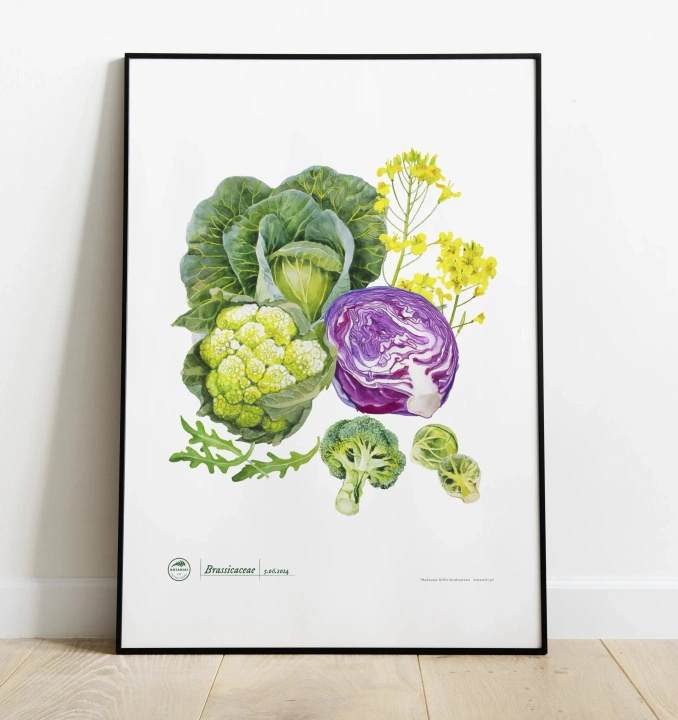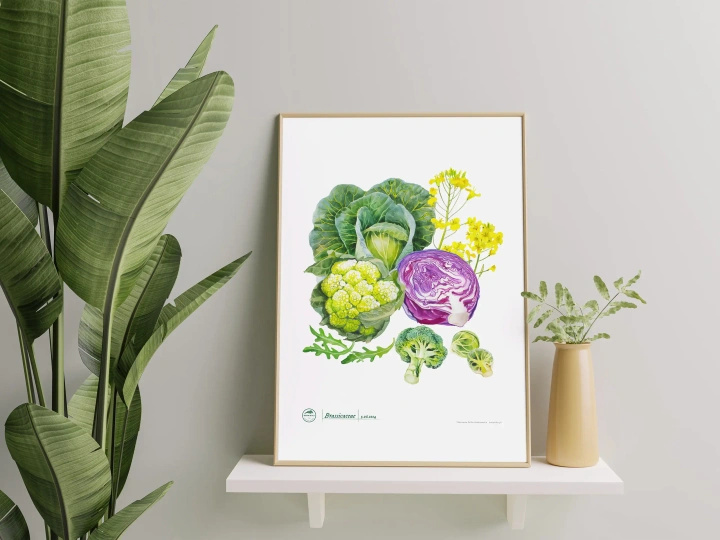Cruciferous vegetables — plant motif poster
- Poster measuring 32 x 45 cm printed on snow-white 250 g coated paper. When framed in an antique or classic frame with passepartout it will beautifully decorate your interior. Packed flat - no unrolling required.
Subscription products in your shopping cart
Set one delivery frequency for all subscription products in your cart every:
Subscription products in your shopping cart

The natural beauty of plants suitable for any room
The poster is a simple and effective way of providing your home with beauty and elegance. The plant themes on the botaniki posters have been created by Polish artists using watercolours to achieve beautiful and colourful graphics reminiscent of old herbariums from a time before the invention of photography. Each image has been scanned, digitally processed and printed on high quality chalkboard paper to ensure vibrant and long-lasting colours.
- Dimensions: 45 x 32 cm
- Paper weight: 250 g
- Shipped flat
- Sold without a frame
- Coated paper
Cruciferous vegetables
Brassicaceae
A family of herbaceous plants belonging to the order Brassicales. They are commonly found all over the world except in Antarctica and dense, vast tropical forests.
The characteristic feature of this plant family is their rather inconspicuous flowers. Four sepals grow in two pairs of two. The free petals are four, also in two pairs of two, arranged crosswise relative to the sepals, hence one of the family names – cruciferous.
Many plants from this family accompany us every day as food. The most popular include white head cabbage, cauliflower, broccoli, Brussels sprouts, kohlrabi, radishes, kale, and many others. For salads, we often use varieties of arugula or lamb's lettuce. In other parts of the world, Abyssinian cabbage, watercress, and sea kale are popular. The roots of common horseradish and Japanese horseradish are used as spices. Mustards are made from the seeds of white mustard and others containing mustard oil.
Rapeseed is an important fodder and oil plant, from whose seeds the most popular oil in Poland is produced.











